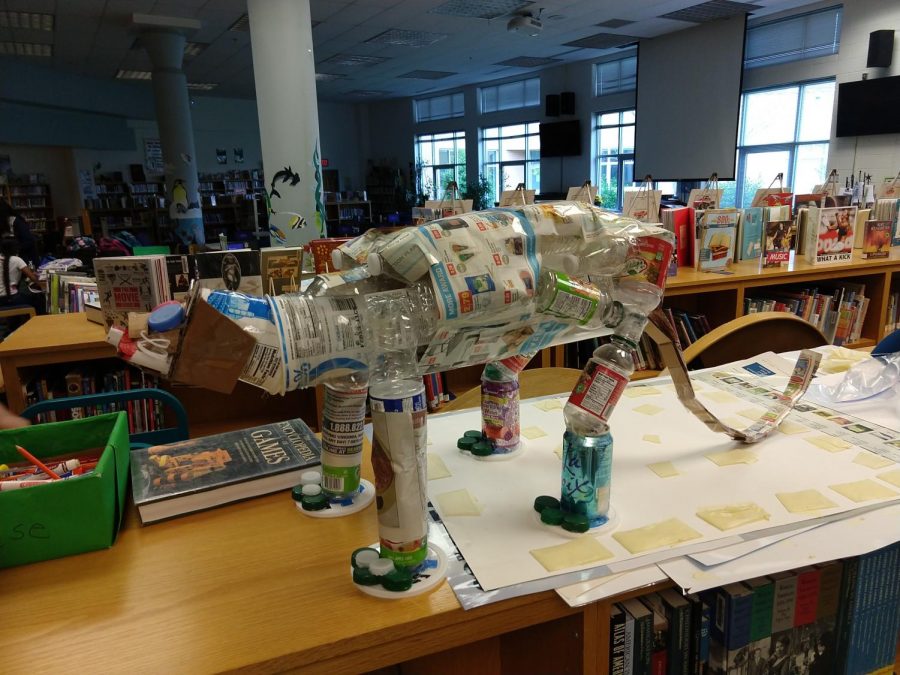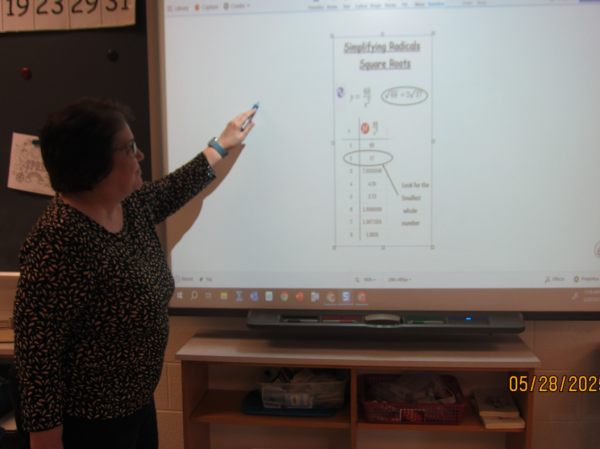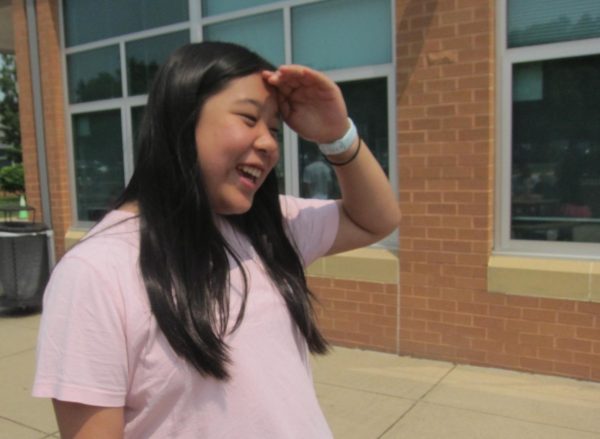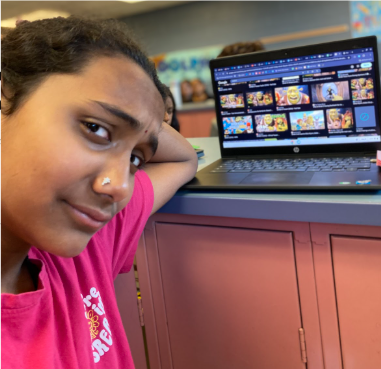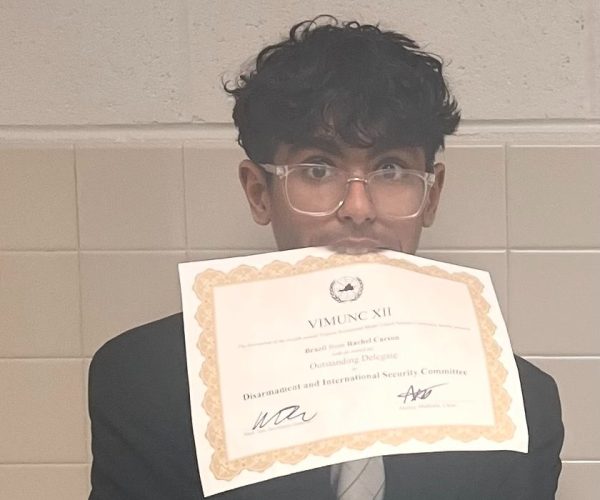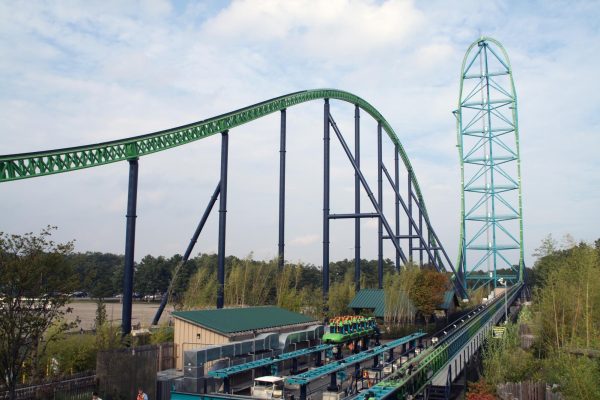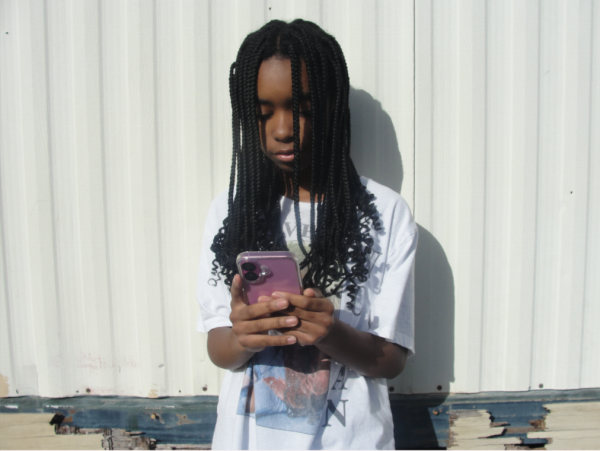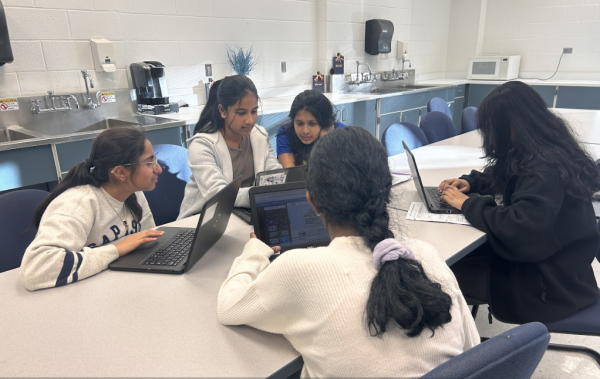Going Green students’ projects win at George Mason event
The Going Green club’s panther mascot, created from a variety of recyclable materials.
The Going Green club won multiple prizes for projects about bees, food sharing, and a recyclable panther at the Caring for Our Watershed event at George Mason on April 10.
Throughout the year, Going Green meets on Wednesdays after school.
“Our club researches and creates projects to help preserve and protect our environment,” said Brandon Huang, an eighth-grader on the Yellow Jackets team.
“We went to the Caring for Our Watershed (CFOW) event to present our panther, and we also looked at other schools’ projects,” Brandon said. “We also took the trip to show what we have done to help the Chesapeake Bay watershed.”
Brandon’s group created a panther, which was made out of recyclable materials. It won first place at the CFOW event, winning $50. The other schools’ projects were presented using educational stands, which all the students viewed.
Two other popular projects from our school were called Food Sharing and Bee Project, which both won grants.
“The rewards for the bee pollinating was a $500 grant and the award for the food sharing was $1,000,” said Mr. Kirk Treakle, the Going Green sponsor from Carson.
The Food Sharing program was implemented in the school after winning first place last year, and was brought back this year. It allows students to donate their extra food to homeless shelters.
“They are going to expand it to elementary schools that feed into RCMS, and the high schools that they are going to,” Mr. Treakle said. “It’s pretty successful this year.”
The Bee Project is a project that aimed to create an environment safe for bees to prosper in. The bee rehabilitation will be at the back of Rachel Carson’s building. “The Bee Project is a very influential project to help preserve our environment,” said Nipun Jonnalagadda, an eighth-grader on the X-treme Team.
“Even the groups that didn’t get a grant are trying to go through with their project,” Mr. Treakle said. The other groups, including Brandon and Nipun’s group, experimented on oyster rehabilitation, recycling, and plastic.
“Many of those won’t happen this year, but they may be implemented of the coming years through seventh-graders, or in high school,” Mr. Treakle said.
Other schools’ groups were able to showcase their projects as well. “There was a worm exhibit where you could have a compost inside your house,” Mr. Treakle said.
Multiple event “tents” allowed the Carson students to visit and learn about different projects. The tents covered topics about biology, like the food web, but also advertised their own ideas like helping make artificial oyster rehabs and offering to teach kids at school the problems in our environment. The Keynote speaker was impressive, and finalists at the event helped students understand information that they did not know about before.
The finalists presented their topics one after the other and while anyone was allowed to listen in, their target audiences was the judges, who would ultimately decide how big each group’s grant would be.
The event will also help the watershed in many ways. According to Mr. Treakle, people may have realized that things were recyclable through the recyclable mascot, and it might even inspire people to help our environment in the long run.
The event will also help the watershed by exposing people to new ideas. According to Mr. Treakle, if they do not get exposed to new ideas, they will not learn anything new.
“It was great that people had a good time and got to learn new things,” Mr. Treakle said. “We got to share our thoughts with other like-minded people at the event.”
